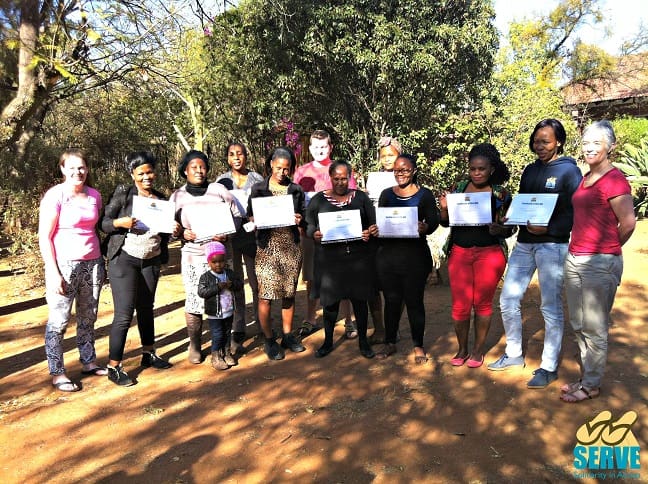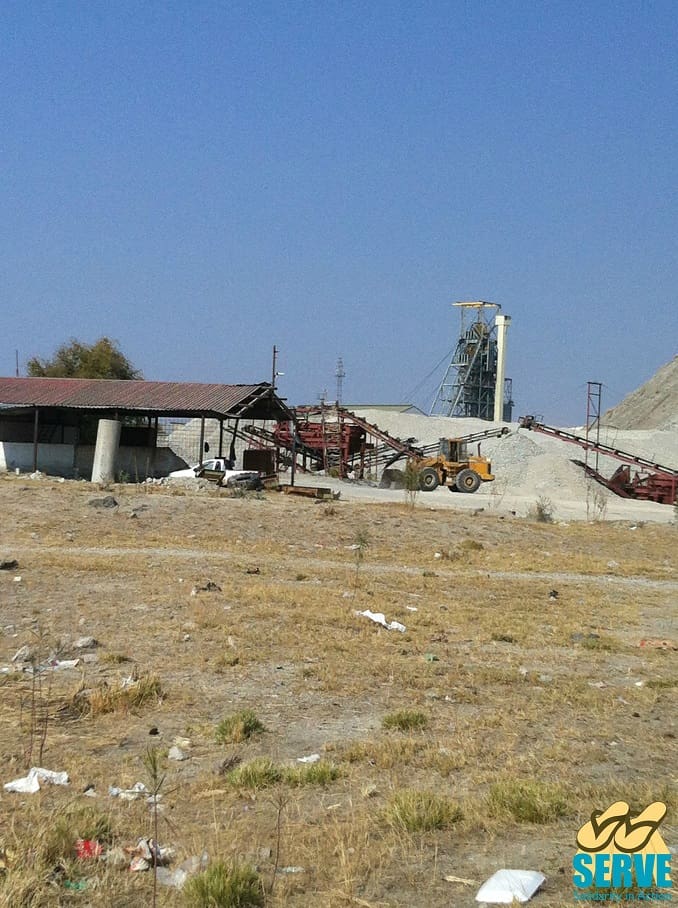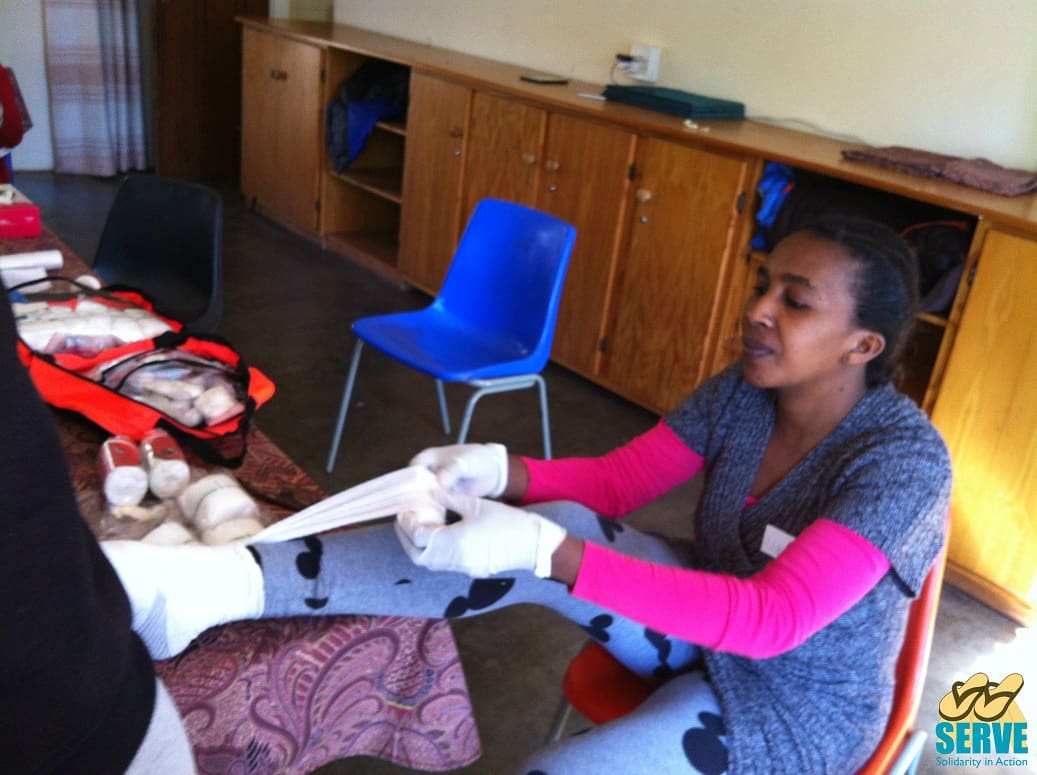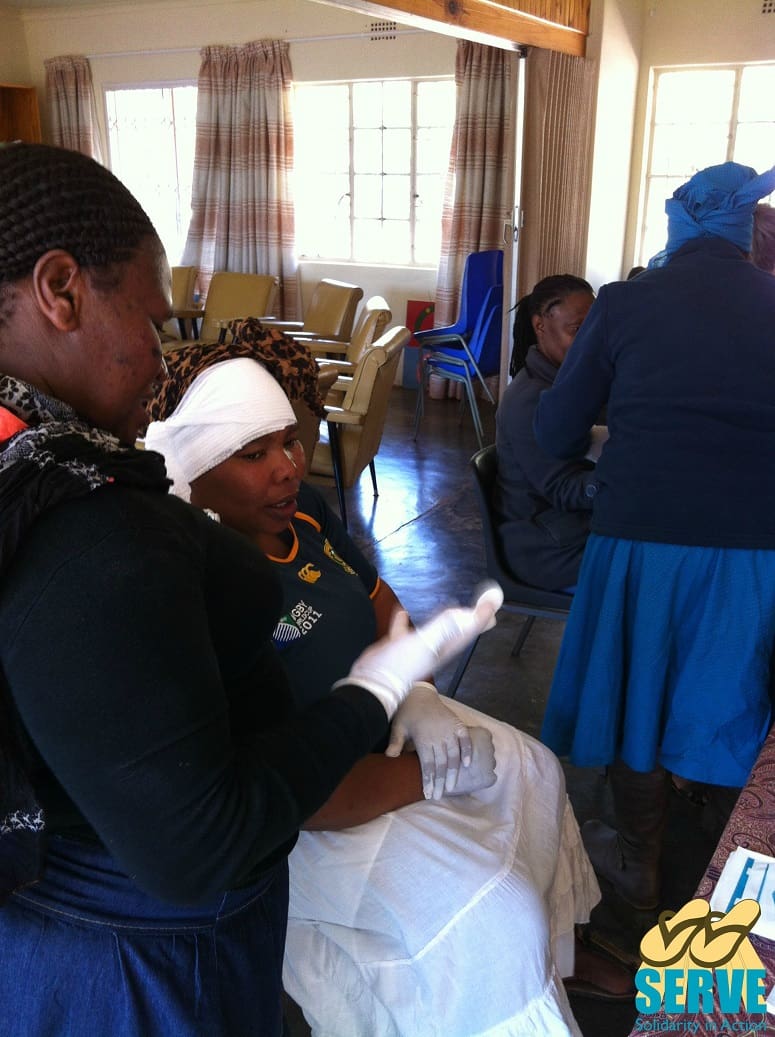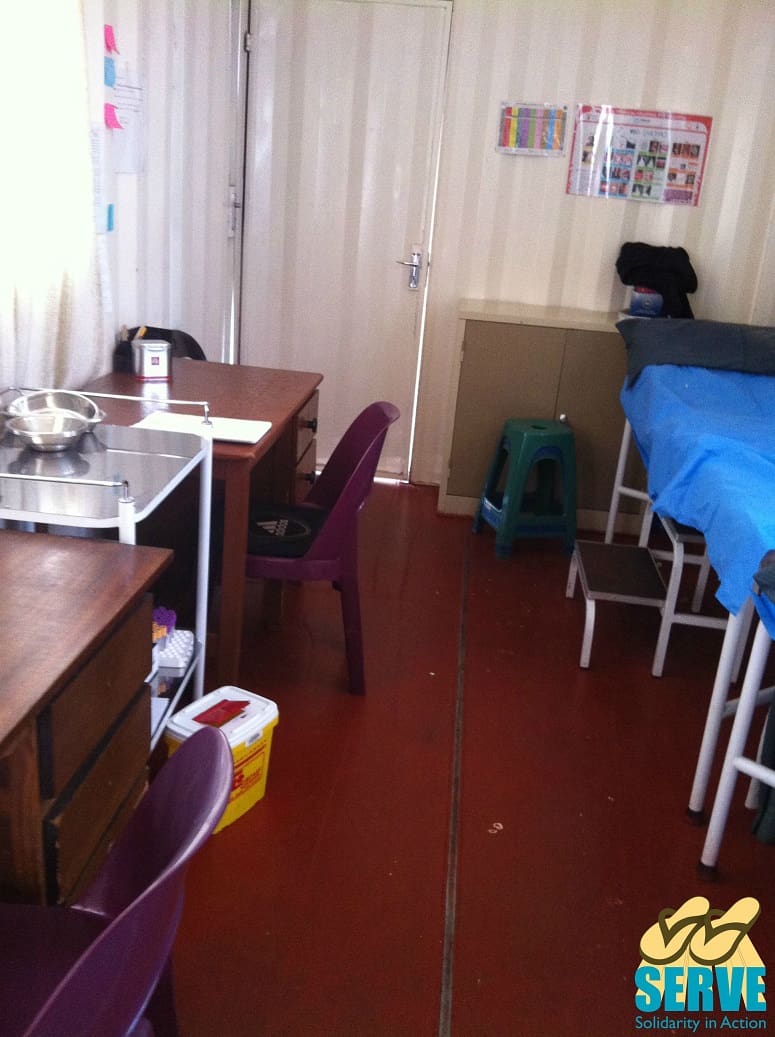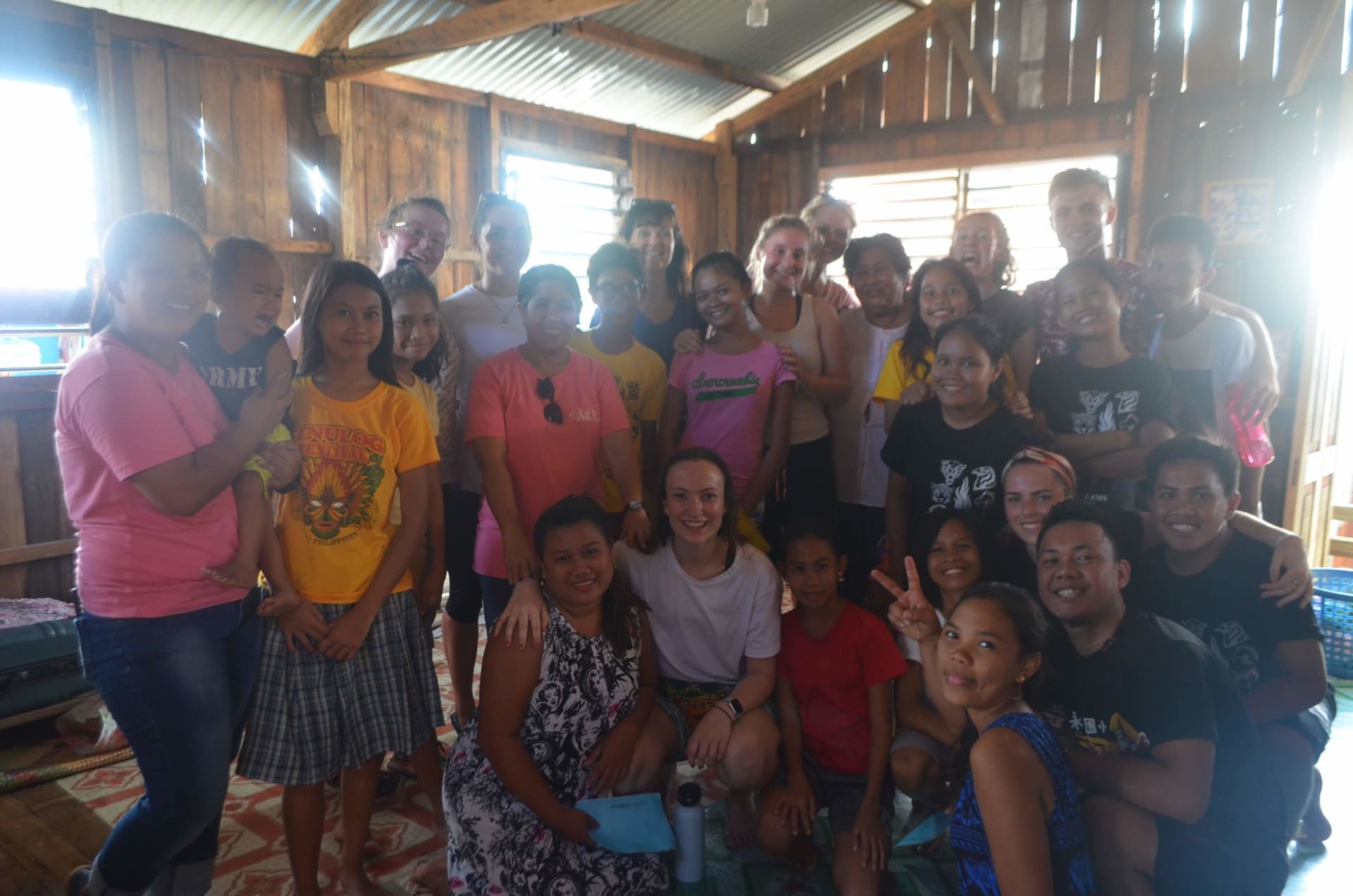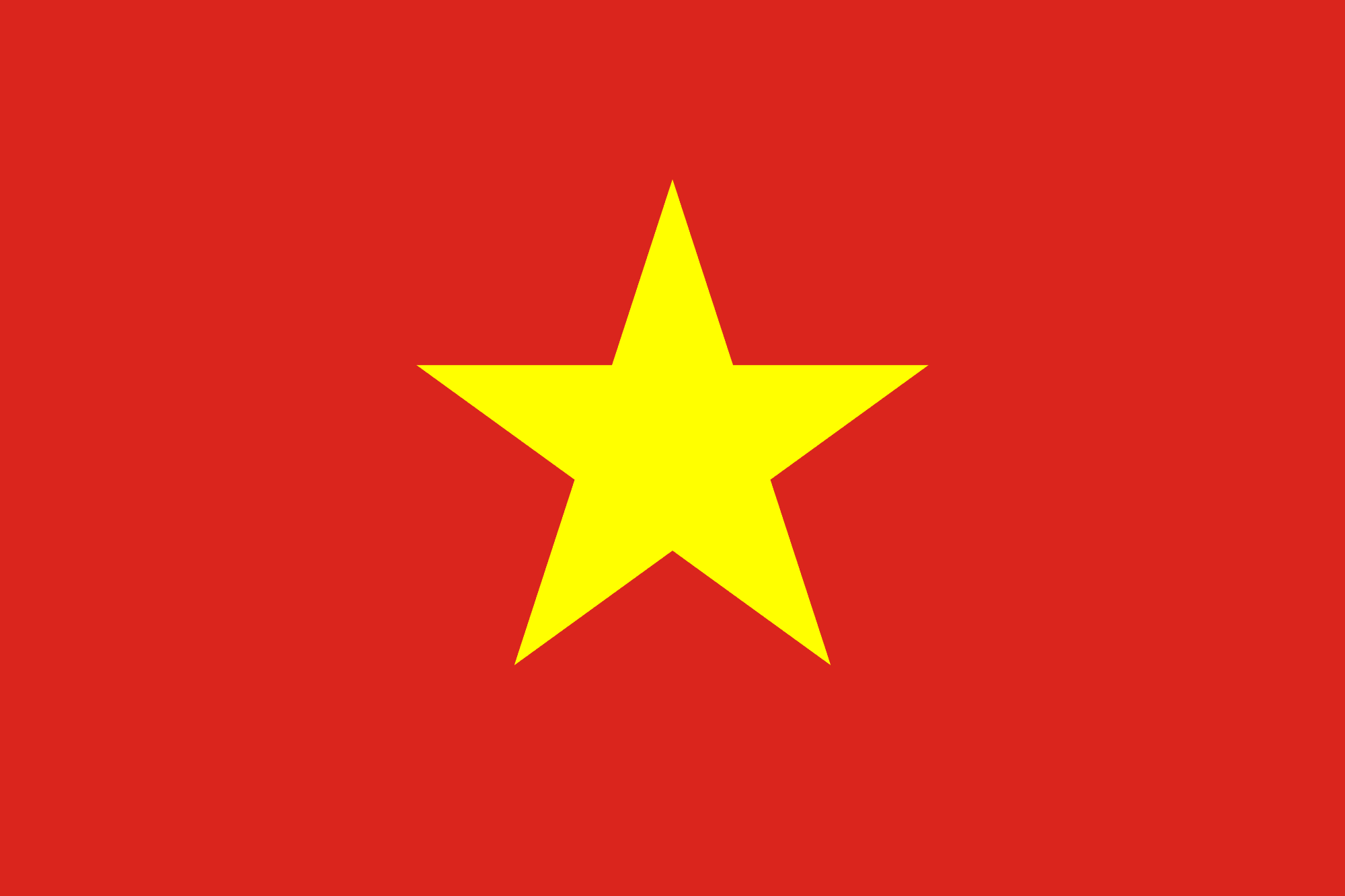The prevalence of HIV in the informal communities in South Africa
By Sarah Hennessey
Dumela (Hi), Leina la me ke Sarah (my name is Sarah). These are a few Setswana words which ‘broke the ice’ on so many occasions with the South African people.
I have learned and achieved so much. The SERVE team did a great job selecting the group of volunteers. Each leader and volunteer have worked extremely hard; sharing a diverse range of fun, talents, skills and great personalities!! I really enjoyed working with the Step-up and Serve group, Sr. Georgina, Brother Joe, Fr. Ken Cooney, Simon Hartley and all the Tapologo and Tsholofelo workers. Their enthusiasm, motivation and persistence with assisting the South African people on a daily basis is remarkable. They have shared personal life experiences, sensitive topics and moving stories.
I have spent many days out in Sr. Georgina’s clinic in Siza squatter camp. Unfortunately due to the enormous platinum mining industry in Rustenburg, migration, HIV/AIDS numbers, poverty, unemployment squatter camps enclose the city. This leaves people without basic human needs including running water, sanitation, sufficient food, adequate housing, electricity and basic health care. I was shocked and saddened to hear at least 3 out of every 100 houses are in the care of a child! There is a lack of ethical leadership in South Africa. 211,000 known cases of HIV in Rustenburg. The government only recently finally agreed Anti Retro Viral Treatment (ARV’s) as human right. Anti-retro Viral treatment is necessary to supress HIV allowing the immune system to recover and stay strong. Allowing people to live long, healthy lives. 3 million people are on ARV’s in South Africa; with no support for compliance. Tapologo have a 95% adherence rate with ARV treatment. Hopefully this will be adhered to in years to come.
Sr. Georgina has set up a very efficient and well run clinic in Siza. Two professional nurses and carers (trained by Sr. Georgina) work there. Some of the women are employed from the squatter camp community. They assist with translating and providing diagnosis and medication advice with each patient in a way that will encourage them to comply. She spoke of how it took about one year to negotiate with the residents to accept this much needed clinic. Siza is not a permanent settlement therefore the clinic consists of two containers welded together, a HIV counselling and administration container. Sr. Georgina buys all medications and medical supplies such as needles, gauze, sharp bins etc. from a warehouse and food is provided weekly. As there is no running water Sr. Georgina brings drums of water. A small charge exists for each patient to pay which helps the above costs and to pay employees. As a nurse, I assisted with vaccinations, vital sign checks, dressings and documentation.
I vividly remember a little 8-year old girl arrive to the clinic with her grandmother (her primary carer). The girl was emotionless. Her grandmother removed a scarf placed around the girl’s neck. I was shocked to see such a large, fowl smelling wound at the base of her head. We got her to lie face down on the stretcher. We cleaned and scraped excess exudate with antiseptic. I couldn’t understand how calm and tolerant the little girl was. I thought about her well-being, home situation, the disease process, was she getting adequate nutrition? Complying with ARV’s? The nurse supplies a 28 day supply of analgesia, antibiotics, multivitamins and an ARV booster. The nurse ensured that one of the carers visited this girl’s home, did daily wound dressings while ensuring medication compliance and education.
The following week I was delighted to see this girl return to the clinic. I redressed her wound. It had slightly improved. The volunteers gathered a teddy bear, bracelet, head bandanna. I gave them to her but sadly she emotionlessly stroked the bear. Hopefully her grandmother will assist with ARV compliance and clinic attendance. I have realised the significance of this clinic to initiate a basic quality of life reducing physical/mental pain and suffering.
I also facilitated a first aid course with Fiona for crèche workers. This was very rewarding as the group were very enthusiastic and were proud to receive their certificates after the two days.

